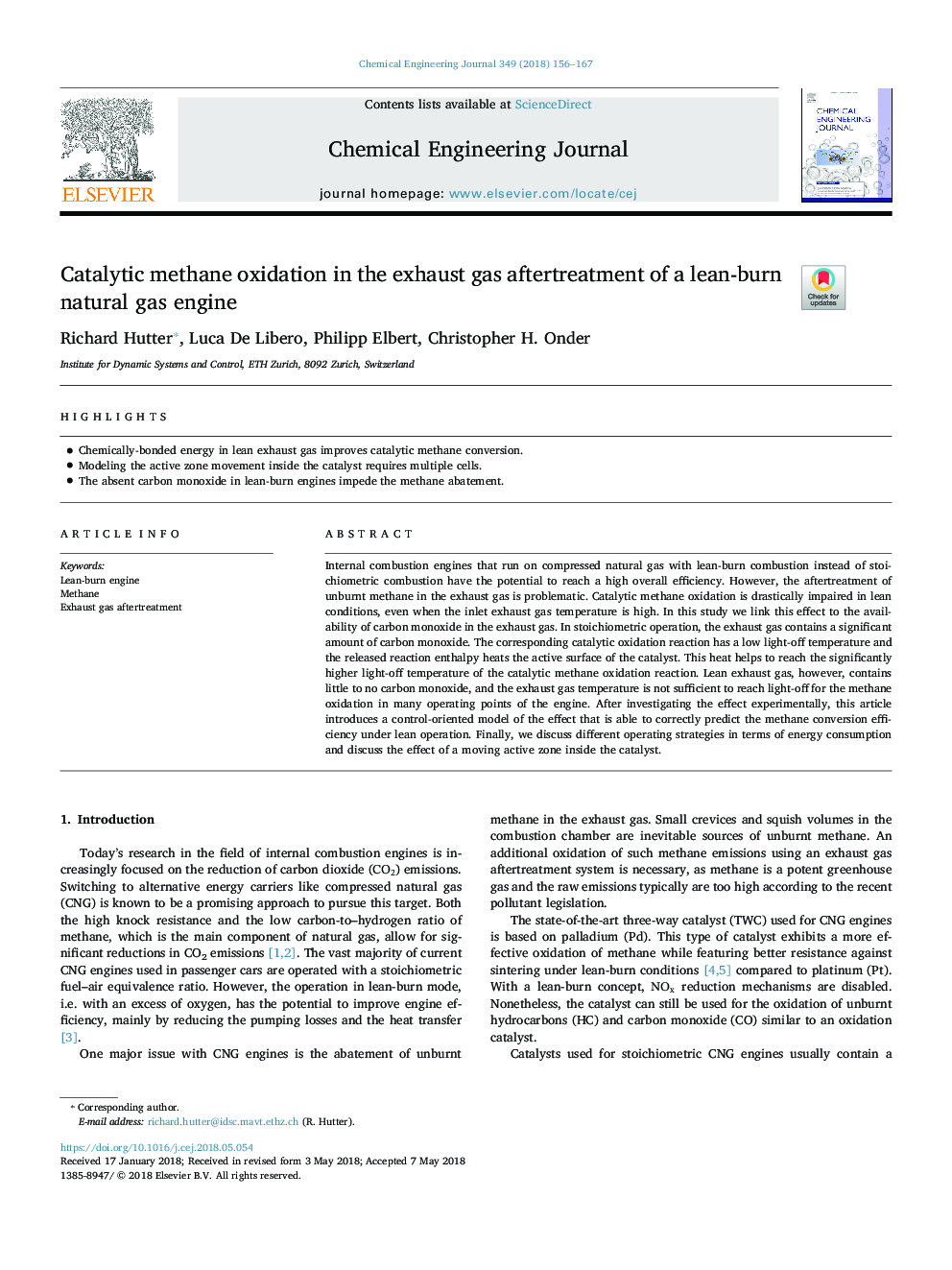| Article ID | Journal | Published Year | Pages | File Type |
|---|---|---|---|---|
| 6578559 | Chemical Engineering Journal | 2018 | 12 Pages |
Abstract
Internal combustion engines that run on compressed natural gas with lean-burn combustion instead of stoichiometric combustion have the potential to reach a high overall efficiency. However, the aftertreatment of unburnt methane in the exhaust gas is problematic. Catalytic methane oxidation is drastically impaired in lean conditions, even when the inlet exhaust gas temperature is high. In this study we link this effect to the availability of carbon monoxide in the exhaust gas. In stoichiometric operation, the exhaust gas contains a significant amount of carbon monoxide. The corresponding catalytic oxidation reaction has a low light-off temperature and the released reaction enthalpy heats the active surface of the catalyst. This heat helps to reach the significantly higher light-off temperature of the catalytic methane oxidation reaction. Lean exhaust gas, however, contains little to no carbon monoxide, and the exhaust gas temperature is not sufficient to reach light-off for the methane oxidation in many operating points of the engine. After investigating the effect experimentally, this article introduces a control-oriented model of the effect that is able to correctly predict the methane conversion efficiency under lean operation. Finally, we discuss different operating strategies in terms of energy consumption and discuss the effect of a moving active zone inside the catalyst.
Related Topics
Physical Sciences and Engineering
Chemical Engineering
Chemical Engineering (General)
Authors
Richard Hutter, Luca De Libero, Philipp Elbert, Christopher H. Onder,
